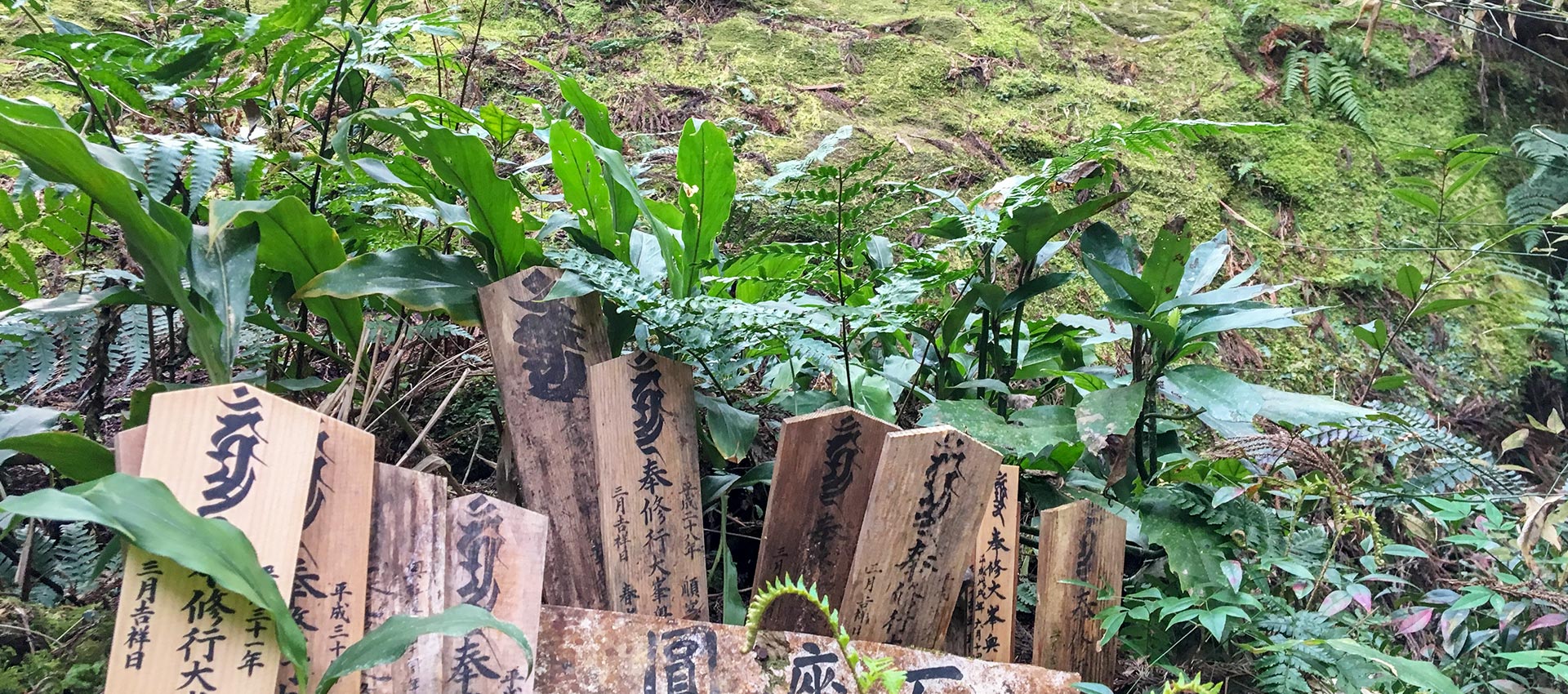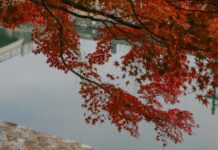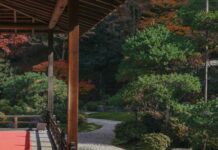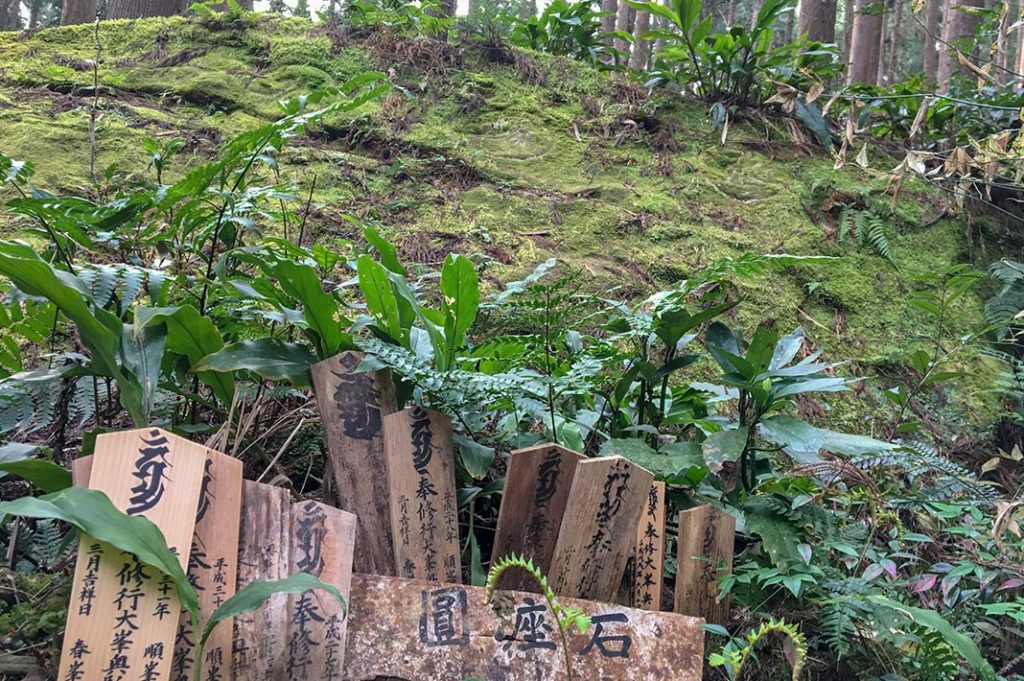
The final day of the Kumano Kodo on the Ogumotori-goe path was bittersweet. On one hand, we were tired and keen to return to our own beds and clean clothes. On the other hand, we were used to the serenity of our surrounds where our only task was to put one foot in front of the other. The return to Tokyo life was not so appealing.
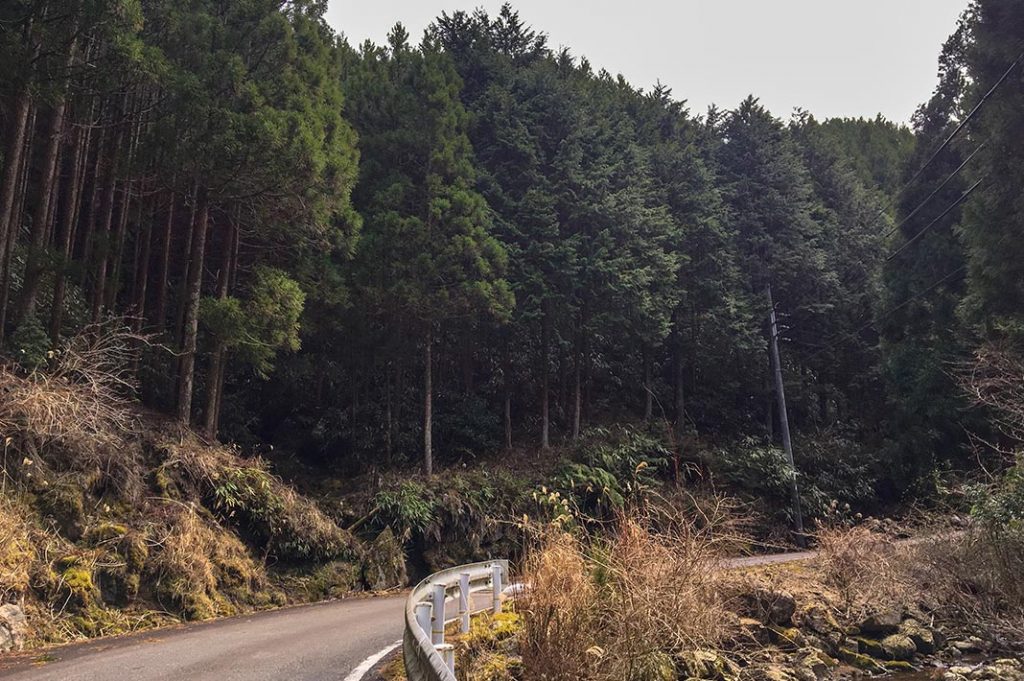
Ogumotori-goe: Koguchi to Nachisan
This day’s hike follows the Ogumotori-goe path from Koguchi to Nachisan. A 14km day to finish strong with a total elevation gain of 1260m, total elevation loss of 930m and a time frame of 7–9 hours. Everything we had done earlier this week was in training for this day. Though a bit of extra mental preparation was required to tackle the immediate and steep 800m uphill ascent. The path was busy with people going their own pace up the mountain with many high fives and red faces at the peak.

Things became easier after that point, a meditative march to our end goal. One highlight of the day was the Pacific Ocean view at the Funami-toge pass. It was here that an awareness of the distance traveled really registered. After that, it was a 4km downhill slog to Nachisan.
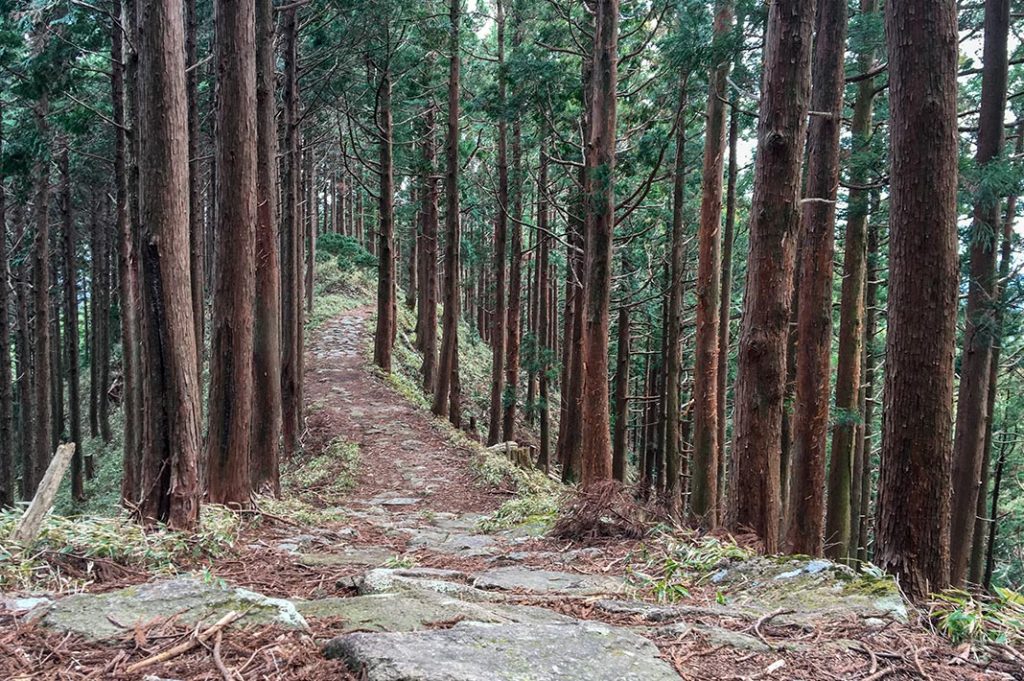
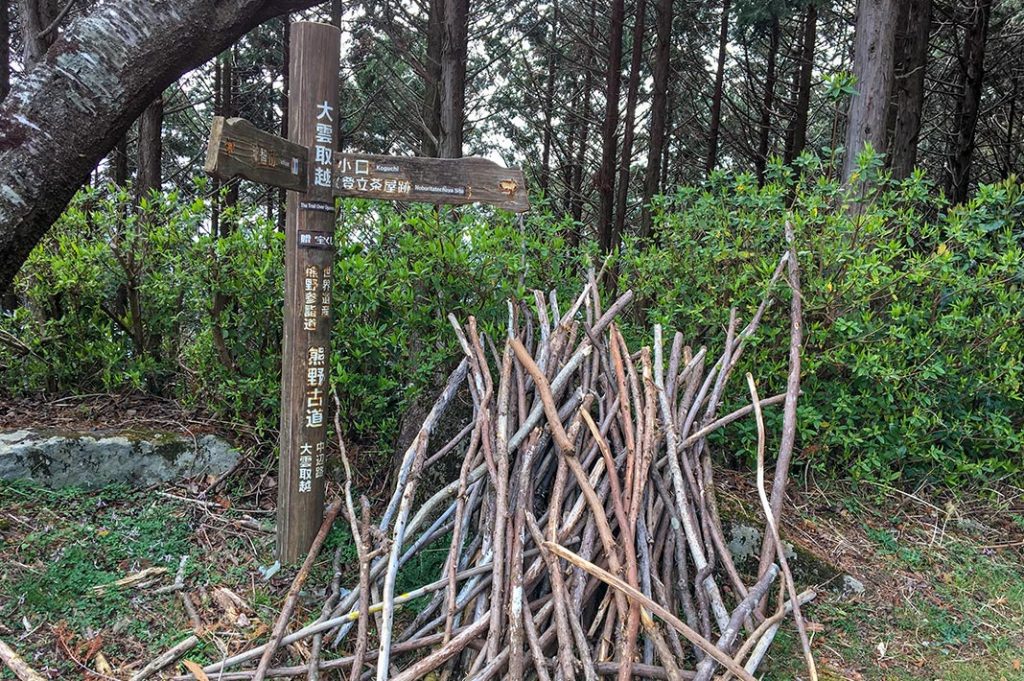
Coming into Nachisan
Nachisan marks, for many, the finishing point of their Kumano Kodo pilgrimage. The final stamps for your pilgrim passport can be gathered here. Few sights manage to take your breath away, but after emerging from five days of forest, the sights of Nachisan certainly do so.
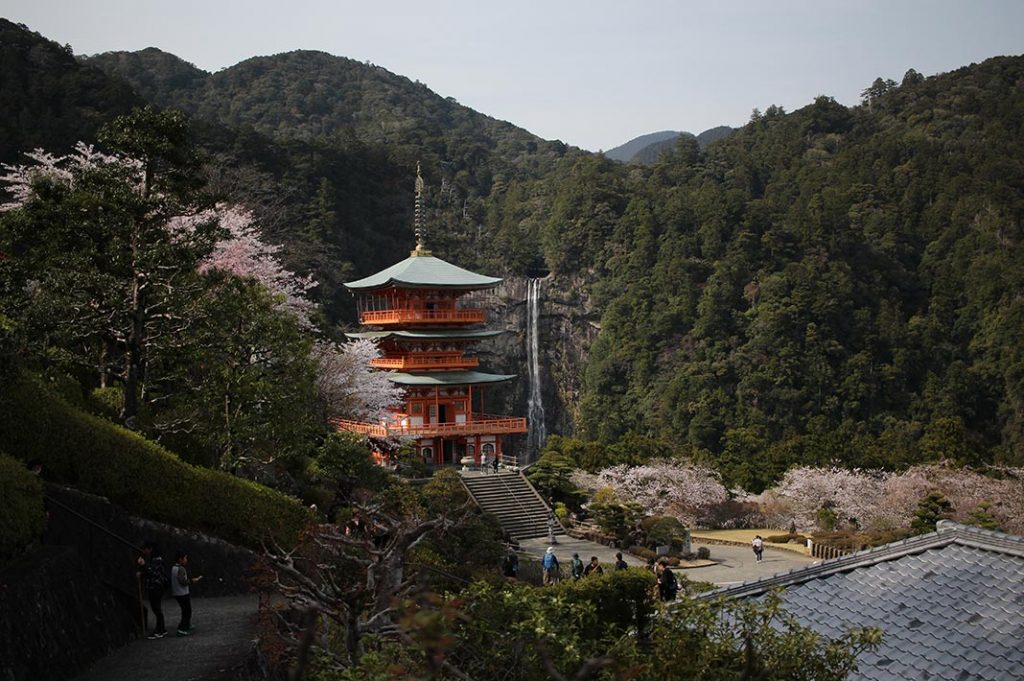
A stunning three-tiered pagoda and towering waterfall lie to your left. Ahead of you is an observation area and to your right is the shrine, temple and ancient camphor tree. Cafes and souvenir stores line the winding streets. This mountainous town is truly a treat for the eyes and the soul. It is a great place for a celebratory plum ice cream, a look at the fridge magnet selection and to revel in the beauty of nature.
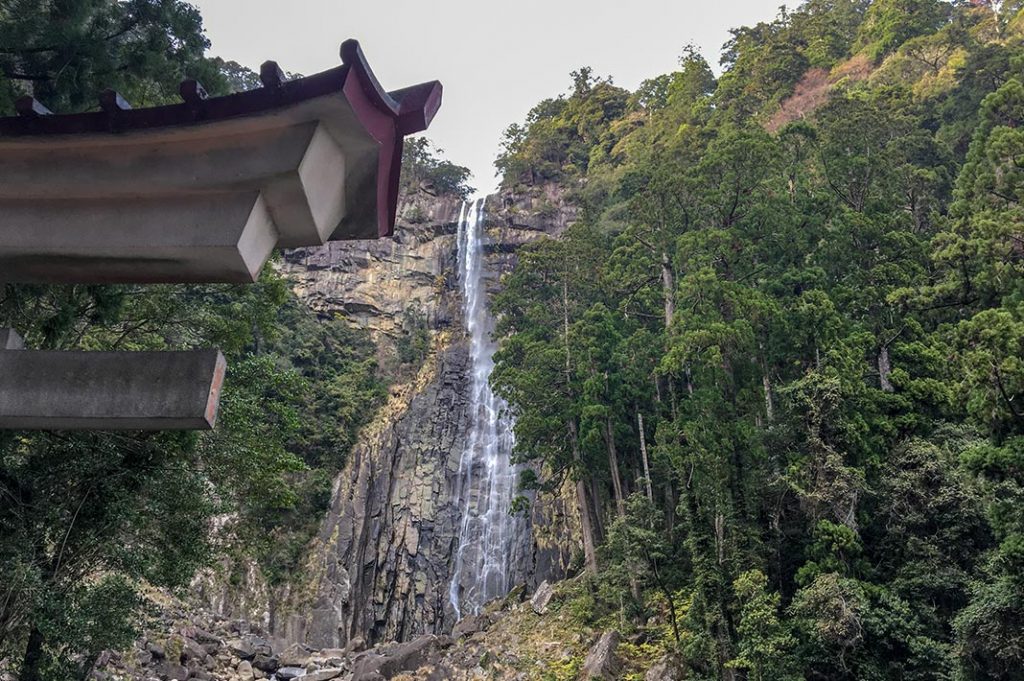
Nachi Falls (Nachi no Taki) is the tallest waterfall in Japan with an ‘uninterrupted drop’ of 133 meters. At various points around town, you can get a photo of the falls and the stunning three-storied pagoda together. The shrine at the top of town is Kumano Nachi Taisha, one of the Three Grand Shrines, with the Buddhist temple Seiganto-ji right beside it. The ancient camphor tree, with its heavy gnarled branches, arches over the whole space.
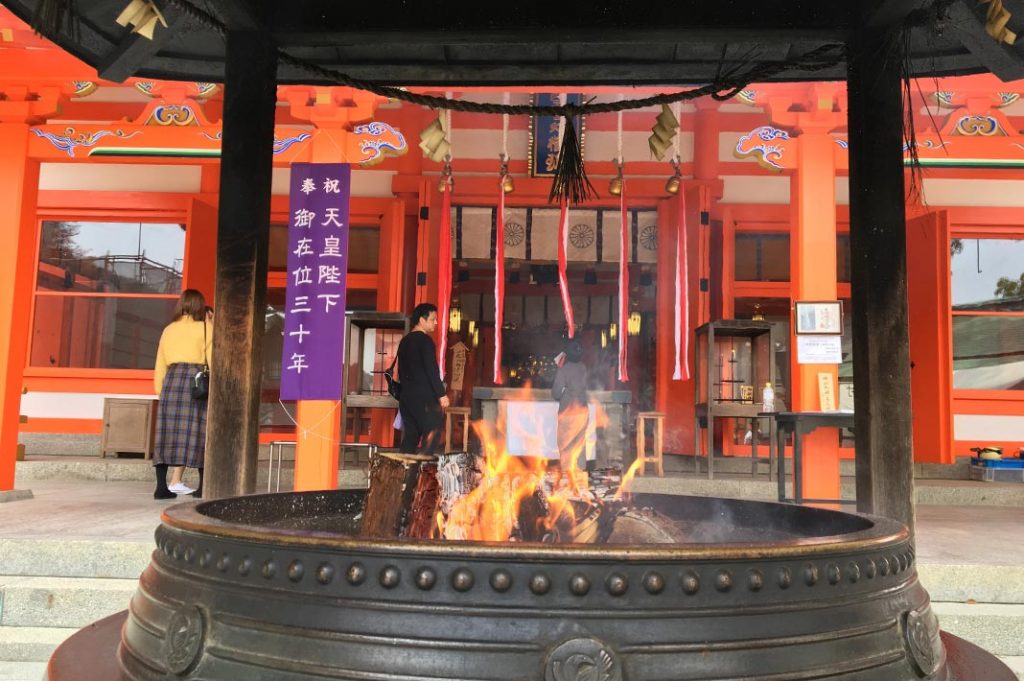
At the end of the trek, there is a feeling of accomplishment, strength and capability. A connectedness to the nature, people and history of this beautiful corner of Japan. People of all ages can experience this wonderful hike. In fact, I saw many retirees put younger hikers to shame.
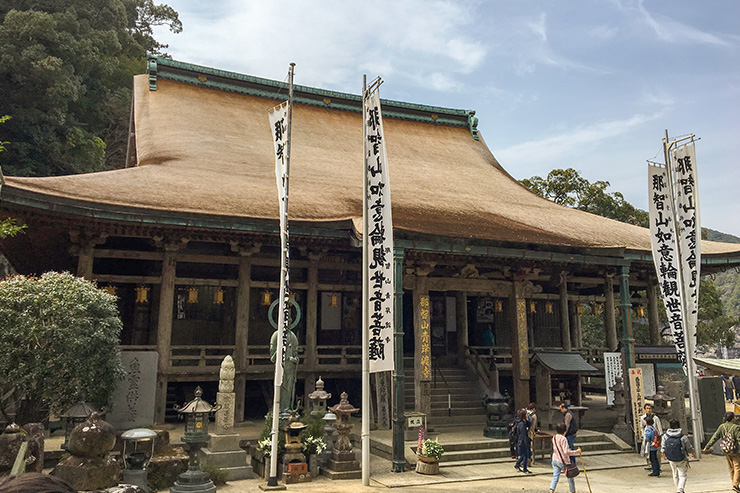
Getting home from Nachisan
We stayed the night in what appeared to be the only accommodation in Nachisan. As a result, meals were a merry affair with people we’d seen along the trail. In the morning, everybody migrated from breakfast to the bus stop located behind the large souvenir store. With bleary eyes and weary legs, we bid farewell to our week spent in the hills of Wakayama.

Buses run regularly from Nachisan bus stop to Nachi Station and Kii-Katsuura Station. After that, you can get trains north to Nagoya or around the peninsula to Shin-Osaka Station via the Nanki-Shirahama Airport.
Read about earlier days here: Day 1, Day 2, Day 3 and Day 4.
Post by Japan Journeys.



